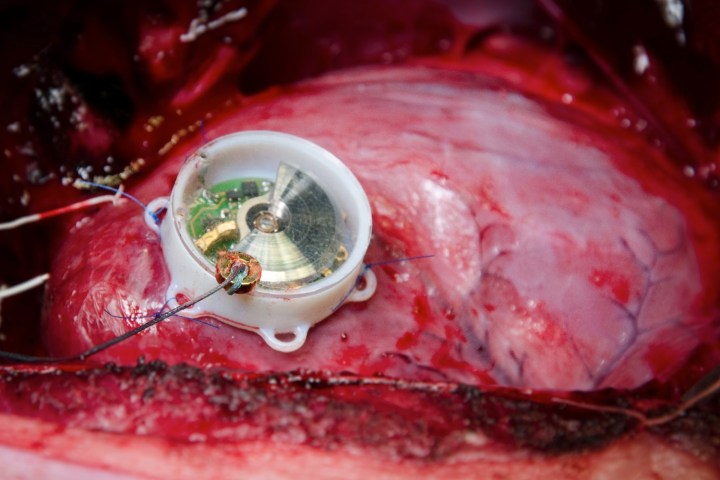
The effort is being led by Adrian Zurbuchen, a post doctoral student currently at the University of Michigan, whose Ph.D. project focused on designing, optimizing and testing the prototype.
“Automatic wristwatches have a long history and are known to be robust, reliable and precise over many years,” Zurbuchen told Digital Trends. “[They’re] a masterpiece of engineering, really. It is then only logical to make use of these good properties, especially when it comes to long-term medical implants such as the cardiac pacemaker. And since timekeeping is not a feature of pacemakers, we can reduce complexity that increases the mechanism’s reliability even more.”
The clockwork pacemaker is based on a modified wristwatch manufactured by a subsidiary of Swatch. To it, Zurbuchen added a microgenerator from an autoquartz watch that converts mechanical energy into electrical energy.
What drives the pacemaker is energy harvested from the pumping of the heart, similar to the way self-winding watches translate motion from the wearer’s arm into energy for powering the watch’s gears.
“There are more than 1 million cardiac pacemaker implants per year worldwide,” Andreas Häberlin, a cardiologist and bioengineer at the University Hospital who also played a role in the project, told Digital Trends. “These pacemakers are powered by a primary battery, which become exhausted over time. That means that you have to replace the pacemaker after a few years. As a result, 25 percent of all implantation procedures are to have pacemakers replaced. If you could somehow allow a pacemaker to harvest energy inside the body, you wouldn’t need a primary battery, so you wouldn’t need to re-operate on patients, which saves on surgery and potential complications.”
The clockwork pacemaker has been tried out on a robot that mimics human heart motions, as well as on a pig, where it was confirmed that it generates enough energy to power the device.
Alternate solutions being explored, primarily by Häberlin, include a solar-powered pacemaker and one that works like a turbine to harvest energy from blood flow. All three projects aim for the same goal of battery-free independence.
As with any medical research project, of course, this isn’t going to be available to you or I any time soon. There are plenty of hurdles the work still needs to leap before human clinical trials can be considered — such as whether it could work effectively in a person with diminished heart function.


